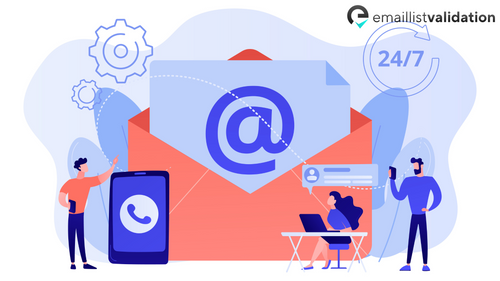In today's data-driven world, document security is paramount. Whether you're a business professional, educator, or content creator, the need to protect sensitive information is universal. DocSend, a document sharing and tracking platform, offers a robust solution to this challenge through email verification. In this extensive guide, we'll delve into the depths of DocSend email verification, exploring its significance, methods, and benefits, and how it can revolutionize the way you share and safeguard your documents.
The Importance of Document Security
Before we immerse ourselves in the world of DocSend email verification, let's understand why document security is a topic of such importance. In our interconnected digital landscape, sensitive documents are constantly exchanged. Protecting confidential information from unauthorized access is not just a legal obligation but a cornerstone of trust, whether in business or personal interactions.
Document security encompasses controlling who can access, view, or edit your documents and monitoring their interactions with those files. This is where DocSend email verification becomes pivotal.
DocSend: The Vanguard of Document Security
DocSend has emerged as a trailblazer in document sharing and tracking. It empowers users to control, monitor, and enhance document security while simplifying the sharing process. A cornerstone of DocSend's security measures is email verification, ensuring that only the intended recipients can access shared documents.
Now, let's journey through the key aspects of DocSend email verification, from its methods to its tangible benefits.
Understanding DocSend Email Verification
Email verification within the DocSend ecosystem is designed to ensure that viewers of your documents are who they claim to be. It adds a robust layer of security to the document sharing process. But how does it work?
1. Email Authentication
At its core, DocSend email verification involves authenticating the email addresses of document viewers. Before granting access to a shared document, DocSend verifies that the viewer's email address is genuine and under their control. This confirmation reduces the risk of unauthorized access.
2. Email Whitelisting
DocSend allows users to whitelist specific email domains, ensuring that only individuals with email addresses from approved domains can access your documents. This feature offers granular control and is particularly valuable for businesses seeking to limit document access to internal teams or trusted partners.
3. Verified Visitors
Verified Visitors is a feature that enhances the document sharing experience. It verifies the identities of viewers, making it easier for users to determine who has accessed their documents. This level of transparency fosters trust and accountability, which can be invaluable in business negotiations and collaborations.
How to Implement DocSend Email Verification
Implementing DocSend email verification is a straightforward process:
Sign Up for DocSend: If you haven't already, create a DocSend account. You'll find a range of subscription options to cater to your needs.
Upload Your Documents: After signing up, upload the documents you want to share securely.
Set Email Verification Options: Customize your email verification settings. Choose whether you want to authenticate viewers' email addresses, whitelist specific domains, or utilize the Verified Visitors feature.
Share Your Documents: Share your documents with confidence. Only viewers with verified email addresses or from whitelisted domains will gain access.
Monitor and Analyze: Use DocSend's tracking and analytics tools to monitor viewer interactions with your documents.
The Benefits of DocSend Email Verification
The advantages of DocSend email verification are abundant:
1. Enhanced Security: By verifying viewer email addresses, DocSend significantly reduces the risk of unauthorized access to your documents.
2. Trust and Transparency: Verified Visitors instills trust and accountability in your document sharing processes.
3. Control: Whitelisting email domains provides a high level of control over who can view your documents, ensuring that they reach only the intended recipients.
4. Streamlined Sharing: DocSend streamlines the document sharing process, making it user-friendly and secure.
Frequently Asked Questions
Let's address some of the most commonly asked questions about DocSend email verification:
1. Is DocSend email verification compatible with all email clients?
Yes, DocSend's email verification works with all popular email clients, ensuring a seamless experience for both senders and viewers.
2. Can I customize email verification settings for different documents?
Absolutely. DocSend allows you to tailor email verification settings for each document, giving you complete flexibility.
3. Is DocSend suitable for personal use, or is it primarily for businesses?
DocSend is versatile and can be used for personal document sharing as well as for businesses of all sizes.
4. What if I encounter issues while setting up email verification?
DocSend offers comprehensive support and resources to guide you through the process. Their help center and customer support are invaluable in addressing any concerns.
5. Does DocSend offer a free trial for new users?
Yes, DocSend typically offers a free trial period for new users, allowing you to explore its features and experience email verification firsthand.
In conclusion, DocSend email verification is a game-changer in the realm of document security and sharing. By adding an extra layer of trust and control to the process, it empowers users to safeguard their sensitive documents. Whether you're a business professional or an individual seeking to protect your information, DocSend's email verification offers an array of benefits that elevate the way you manage and share your documents. Trust in your document security, and enjoy seamless, secure sharing with DocSend.



